The construction of a winter greenhouse is a pretty serious task. Simple structures may not give the planned effect, but more complex ones require time, effort and money. But with the availability of materials, some building skills and, most importantly, the desire to work hard, it is more than realistic to solve the problem of a year-round harvest of useful vitamin crops.
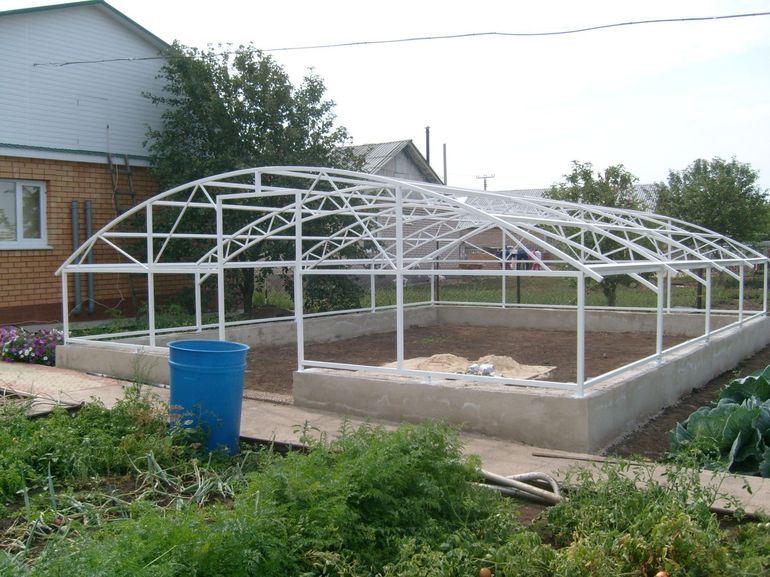
Content
The beginning of an important path
Suburban cultures, depending on the species, require different approaches. There are several other factors that can affect the choice of the type of structure, the place for it, the planning and arrangement of heating and irrigation systems.
Work plan
Even the most begin small best winter greenhouse designs. With your own hands you can create a drawing, a plan, which you will need to follow in the future. Corrections will be inevitable, because practice is always different from theory. To minimize their number, already at the very first stage it is necessary to determine the order of work. There are no special secrets. Actions are carried out in the following sequence:
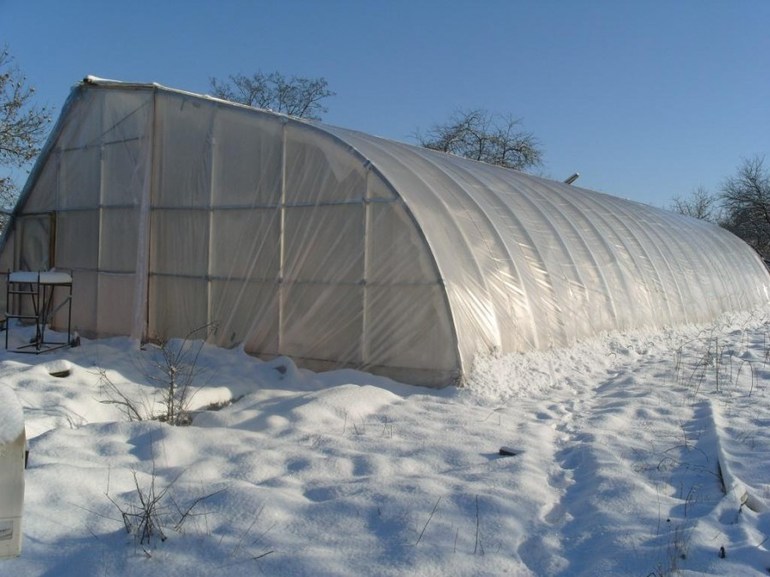
- Plan a plot for construction.
- Determine the number, size and direction of the beds.
- To establish how communications will be brought to the greenhouse.
- Calculate the area of the structure, choose its type.
- Decide on materials and tools, purchase them.
- Lay the foundation of. The summer option does not require a capital base, and the all-weather greenhouse must have a reliable foundation.
- Bring heating to the construction site. If you do this in advance, then you don’t have to make holes in the walls, and even insulate the pipe inlets. The same goes for lighting and irrigation systems.
- To build a frame.
- To arrange the roof, walls.
- Mount the inside of the communications.
- To bring in soil.
- Decorate the space indoors.
- Connect the communications and carry out a test run.
- Correct deficiencies.
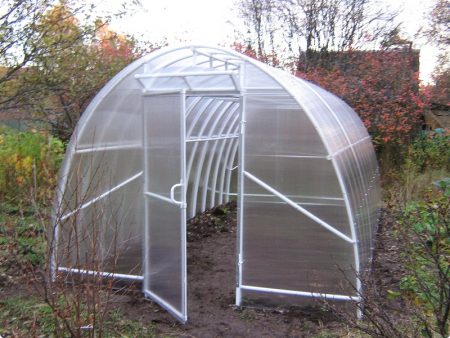 You may be interested in:
You may be interested in:Selection of materials
Reliable designs of heated winter greenhouses involve the installation of structures on a small hill, but not in place of strong winds. There is more sun and snow is falling faster. Nice and wall-mounted structures, which become a continuation of the house - this saves space on the site, simplifies the wiring of communications. Whatever option is chosen, quality materials cannot be dispensed with.
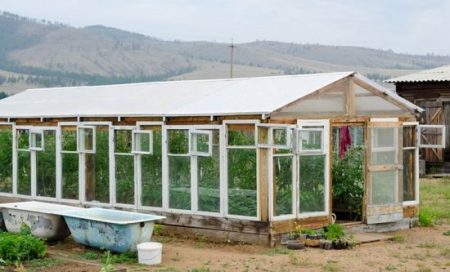 You may be interested in:
You may be interested in:For construction, depending on the choice of design, you can use:
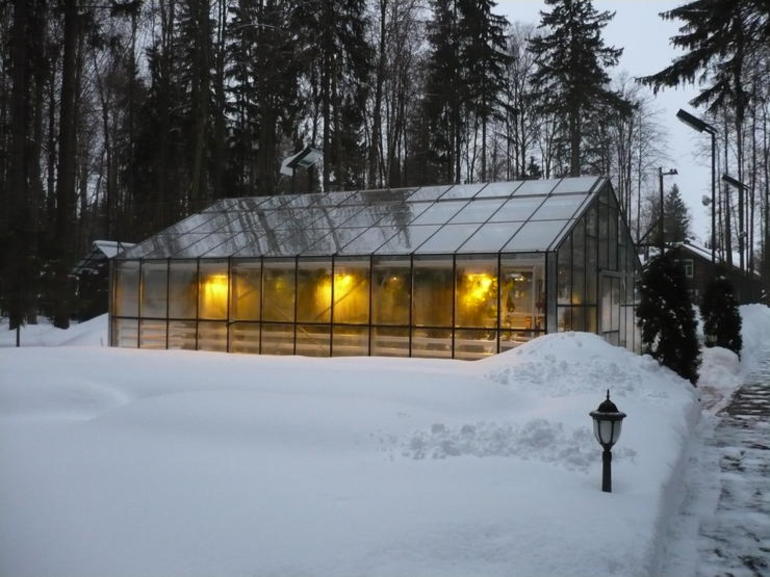
- Wooden boards and bars. They are convenient, but require mandatory treatment with impregnations, varnishes, and paint. The fact is that outside they will be exposed to natural factors, and inside they will be affected by high humidity.
- Metal pipes, poles and profiles. They are more reliable, although the anti-corrosion agent will still not be superfluous. Now, however, the market has a large selection of profiles made of stainless steel, aluminum alloys.
- Polyethylene. This is the easiest and cheapest option to cover. But the film is short-lived. Even if it does not break, it quickly loses some of its properties. In addition, under the winter version, sheets of it will have to be applied several times to each other, layered. Savings will be dubious as a result.
- Glass. Very good, suitable material that meets almost all requirements. But it is fragile, fragile. To an inexperienced master, it may seem that glass is also moody in processing.
- Polycarbonate Now this is the most popular material, based on the ratio of price and quality, not only for a winter greenhouse. It is durable to external influences, plastic, has a decent appearance, is lightweight, undemanding in care, frost and moisture resistant. Experts also note its thermal insulation properties.
- Brick or foam concrete for walls.
Foundation and heating
These are two related questions. If in the summer the greenhouse, the earth itself receives enough heat of the sun, then in the cold season the soil freezes, but there is no natural heating. Therefore, modern greenhouses for growing in winter require a foundation that partially would solve the problem of large temperature differences.
Secrets of a solid foundation
It is customary to set the greenhouse so that the entrance to it is from the south side. In front of the door, it will be right to equip the vestibule, which will act as an air gap between the greenhouse itself and the external environment. This must be taken into account immediately when marking the foundation. Having drawn the lines of future development, you can pick up a shovel and other tools.
For a competent foundation device, you need to know:
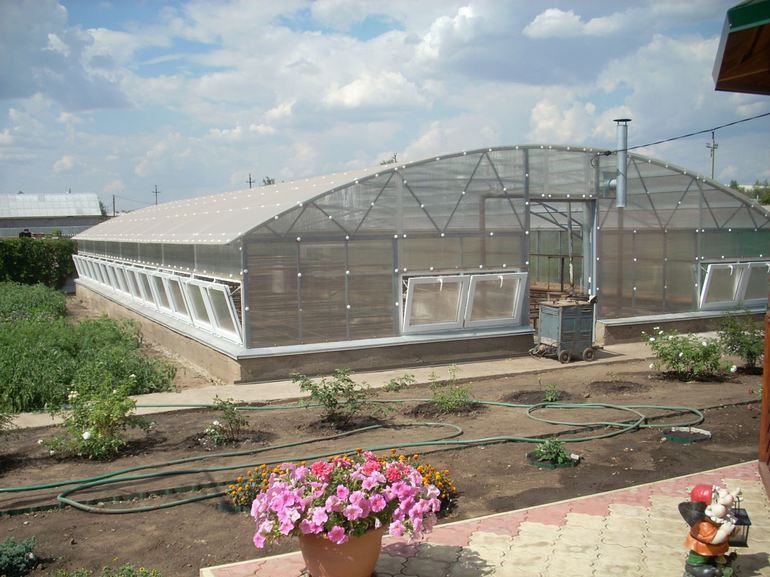
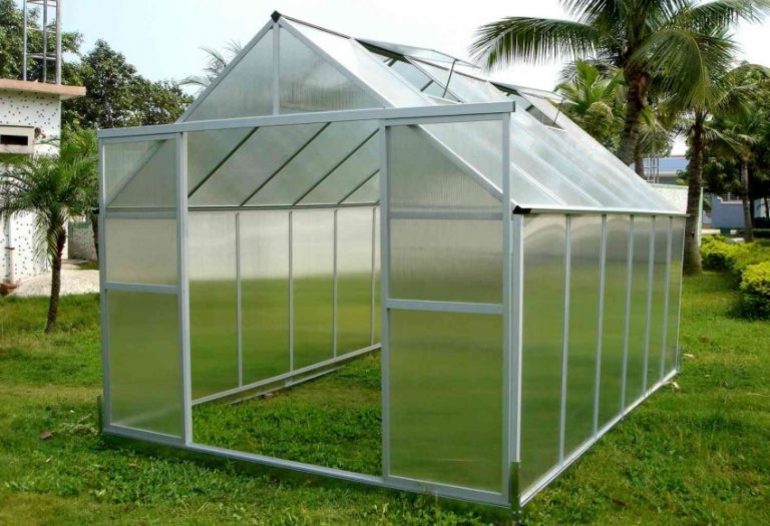
- It is necessary to dig a trench 0.3-0.4 m wide and 1-1.2 m deep.
- It is possible to deepen the structure even more, if there are no underground waters nearby (then drainage will be needed).
- At the bottom you need to pour sand, gravel or expanded clay (0.1-0.2 m). This pillow should be tamped properly. This is the first level of thermal insulation.
- Next is one or even two layers of roofing material for waterproofing.
- Now it’s time to weld and install the reinforcing grill. It can be made by the national team, but it will come out longer and less reliable.
- The foundation is poured in one step. Depending on the type of fastener of the future frame above the cement base, metal pins should be left or the horizontal should be made completely flat.
- You can also lay foam on top. Its layer should not be too large.
If the supply of heating and water supply systems is decided to be carried out underground, then it must be organized before concrete pouring.
The device of artificial heating
Here you can apply several schemes. Their choice usually depends on the availability of communications and equipment, the type of fuel used. For example, if gas or electricity are centrally supplied to the site, then you should not be wiser with a warm greenhouse - its internal system is easier to organize on their basis.
You can consider these and other options. It is necessary to consider:
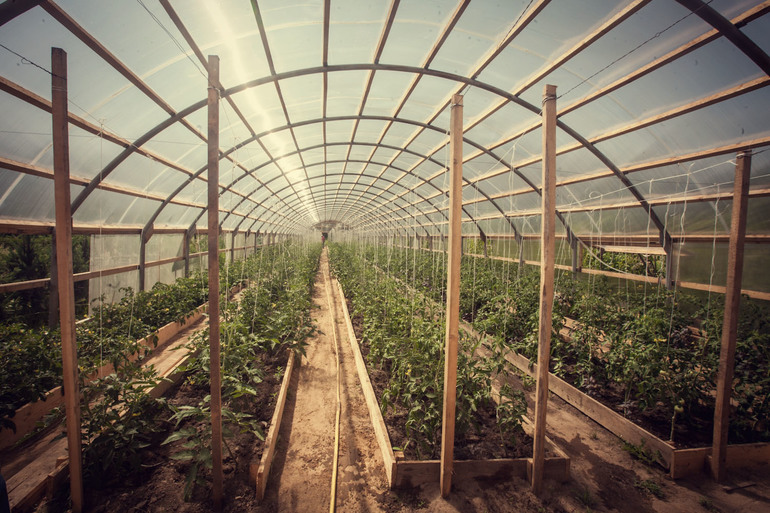
- Whatever the system, it must be designed to ensure uninterrupted provision of the norm in the coldest period.
- The operation of the heating device will be effective and economical only if the entire structure is properly insulated.
- The creation of so-called warm beds will not be superfluous. For them, you will also need trenches in which you need to lay leaves, sawdust, wood bark, pieces of twigs, beaten slate - everything that gives off heat during natural decay.Soil is laid on top of such a natural heater. We should not forget about its quality.
- Heating pipes, batteries, radiators must be placed so that their common system uniformly covers the entire space of the all-weather "garden", provides the same temperature in all places of the greenhouse.
- It is also permissible to install an elementary solid fuel stove (wood, coal, peat). But then more time will have to be devoted to the firebox process itself and to take care of reliable ventilation.
- The ventilation system is doubly important in the winter in a heated room. It allows you to get rid of not only combustion products or excess heat, to regulate the temperature, but also provides oxygen to plants. Window vents based on the principles of physics are mounted on the roof or in the upper parts of the walls.
Erection of a simple reliable greenhouse
The easiest to assemble and at the same time reliable in operation are winter polycarbonate greenhouses with heating. They give good thermal insulation, provide access to natural light. It is also easy to make an elementary non-compulsory ventilation system in them.
The order of work will depend on the characteristics of the structure, but its main stages are unchanged:
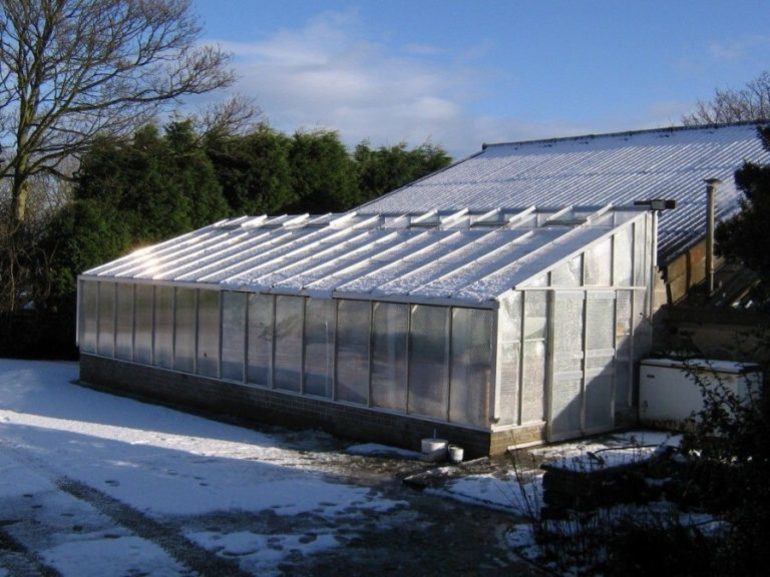
- Assemble the lower block from the profile on or near the foundation.
- Fix the base on concrete with anchors or weld, attach in any suitable way to the pins.
- Withdraw verticals, corner posts and fix them. As a rule, in specialized stores they offer suitable fasteners. It is better to take it with a small margin.
- Do not forget about the vestibule. Its verticals are also mounted at this stage.
- Pave horizontally.
- Fix the verticals on the central upper crossbeam (or crossbeams - depending on what the roof will be).
- Mount the carbonate cladding, starting from the top. It is better to cut the sheets by size in turn immediately before their fasteners. This way you can save time on fitting.
- Sheathe the northern sidewall in two layers.
- Seal joints, gaps.
- To build a sub-ceiling frame of wooden beams.
- Install visors from the outside. This difficult stage can be avoided if the arch is made arched, gable.
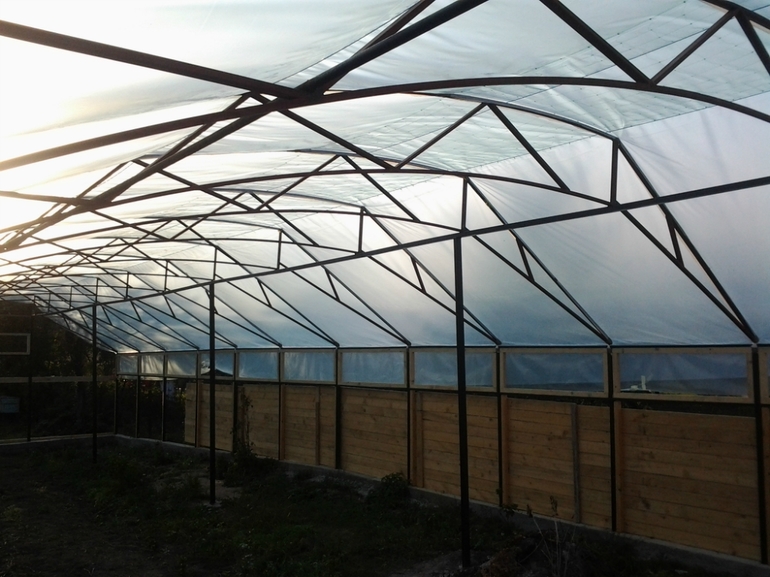
Making a winter polycarbonate greenhouse is just the first step to getting a permanent crop, growing seedlings for open ground. To solve these problems, it is necessary to carefully study the characteristics of various crops, the time of planting, the need for fertilizer.
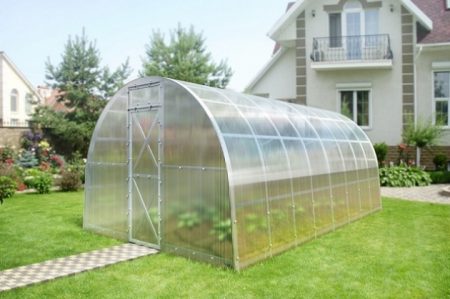 You may be interested in:
You may be interested in:

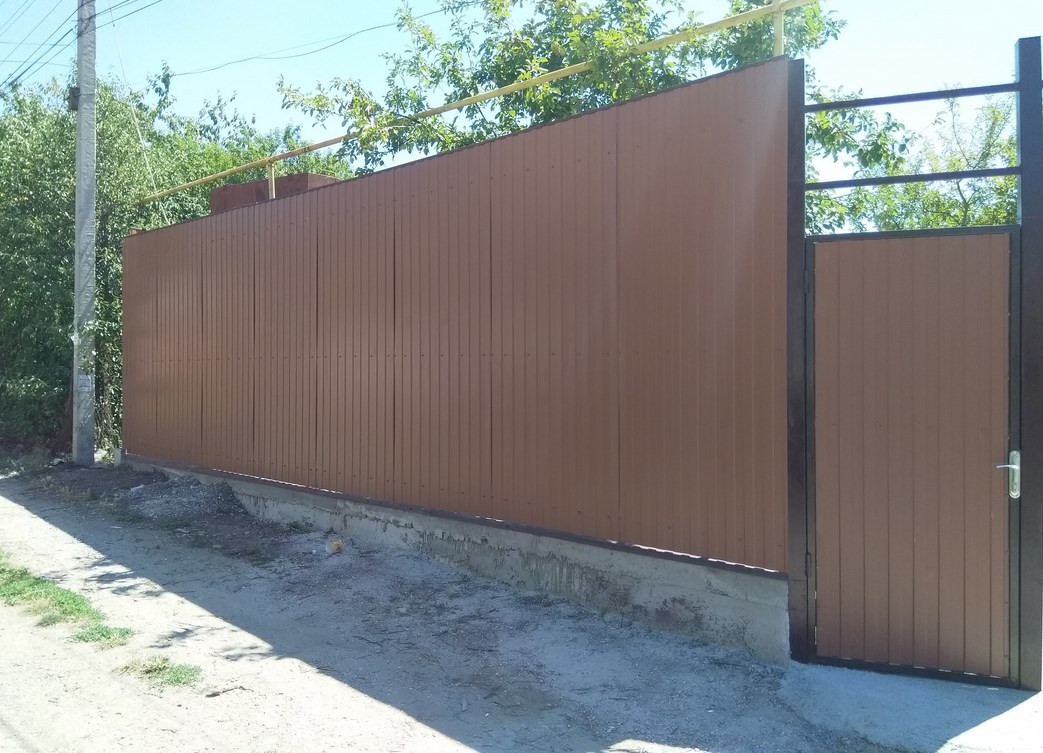
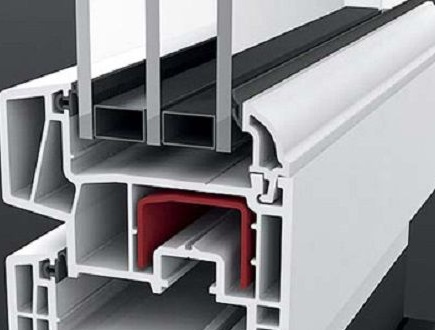
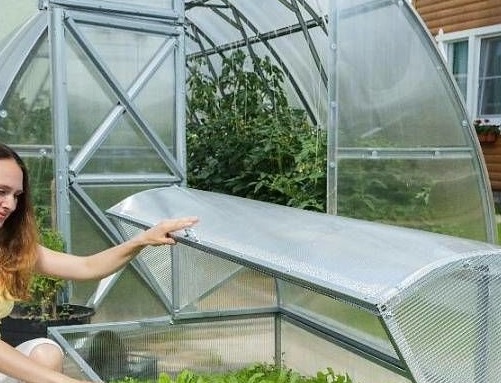
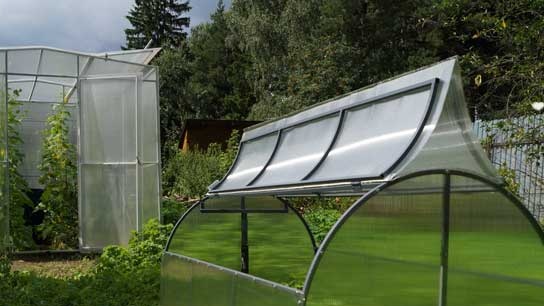 Why is a greenhouse open top?
Why is a greenhouse open top?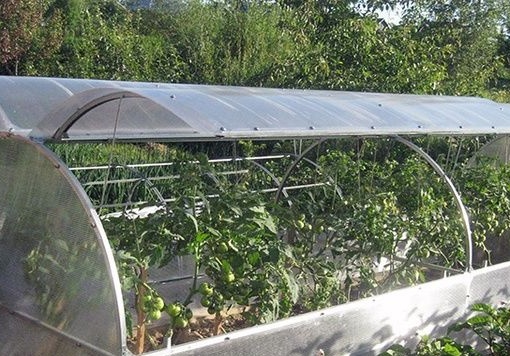 Greenhouse "Butterfly", is it worth it?
Greenhouse "Butterfly", is it worth it?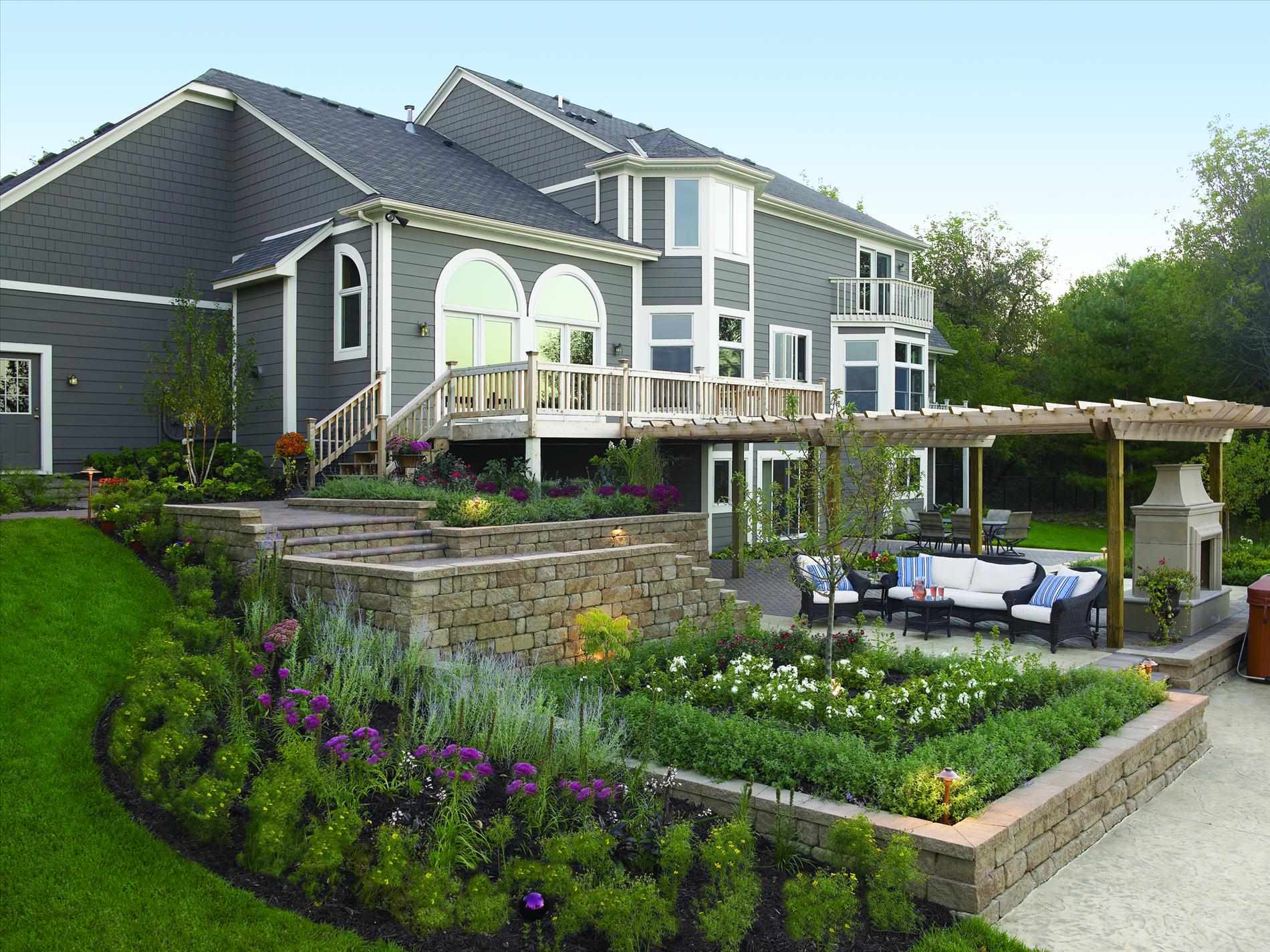 Do-it-yourself landscaping of an area of 8 acres: features of planning and zoning
Do-it-yourself landscaping of an area of 8 acres: features of planning and zoning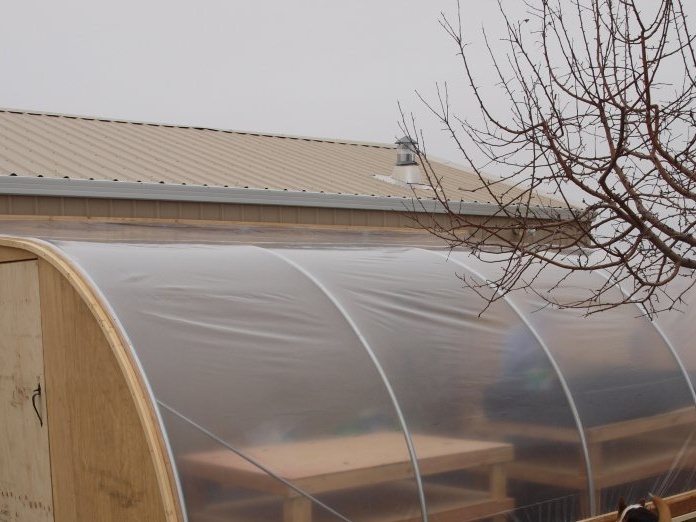 Shed greenhouse, pros and cons
Shed greenhouse, pros and cons